
Blogging is a powerful way to showcase your expertise, share insights, and connect with your audience. But if you want your blog to reach its full potential, you need to ensure it's optimized for search engines. Here's how to write SEO-friendly blog posts.
Search engine optimization (SEO) improves your website's visibility and relevance for search engines and users. Understanding the principles of blog writing for SEO is essential for creating content that resonates with them both.
Applying SEO best practices to your blog posts can increase your chances of ranking higher on search engine results pages (SERPs), attracting more organic traffic, and generating more leads and conversions.

How To Write SEO-Friendly Blog Posts: Getting Started
SEO is more than just a technical aspect of web design. It’s also a strategic and creative process involving understanding your audience, competitors, and goals. SEO can help you:
- Increase your online visibility. You’ll rank higher for relevant keywords and topics your target audience is searching for, boosting your brand awareness and authority in your niche.
- Drive more organic traffic. SEO drives qualified traffic by attracting users actively seeking solutions or answers, making organic traffic more engaged and valuable than paid traffic.
- Improve your conversion rate. Optimized content and websites enhance conversions by addressing audience needs and persuading them to take action, such as subscribing, downloading, or purchasing.
Achieving the Perfect Balance: SEO and User Experience
Crafting an SEO-friendly blog post requires offering valuable content while adhering to search engine guidelines. As search engines prioritize quality signals, it's essential to focus on factors such as:
- Content quality. Search engines prioritize original, informative, accurate, and helpful content while avoiding duplication, outdated information, misleading details, or spam.
- Content relevance. Your content should match the user's search intent, covering the topic thoroughly without being overly broad or narrow.
- Content engagement. Engage users to keep their attention and encourage interaction with the website, minimizing bounce rates and exits without action.
But how do you write SEO-friendly blog posts that appeal to search engines and readers? Learn 11 easy steps for writing blog posts for SEO and user experience. Let's get started!
1. Understanding SEO and Its Importance for Blogs
Before writing your blog post, understand SEO's significance and the need for continual monitoring and enhancement. SEO involves optimizing your website and content for search engines like Google. It includes strategies to boost performance, structure, and content quality, enhancing relevance, authority, and popularity.
By optimizing your website and your content for SEO, you can increase your
- Organic ranking - it's where your website and content appear on SERPs, determined by relevance and quality. A higher organic ranking increases visibility and the likelihood of clicks from potential customers.
- Organic reach - the number of people who see your website and its content on the SERPs based on the keywords and topics that you target. Greater organic reach means more potential customers are visiting your site.
- Organic traffic is visitors who land on your website from SERPs, driven by their interest and intent. Higher organic traffic boosts your opportunities to convert visitors into leads and customers.
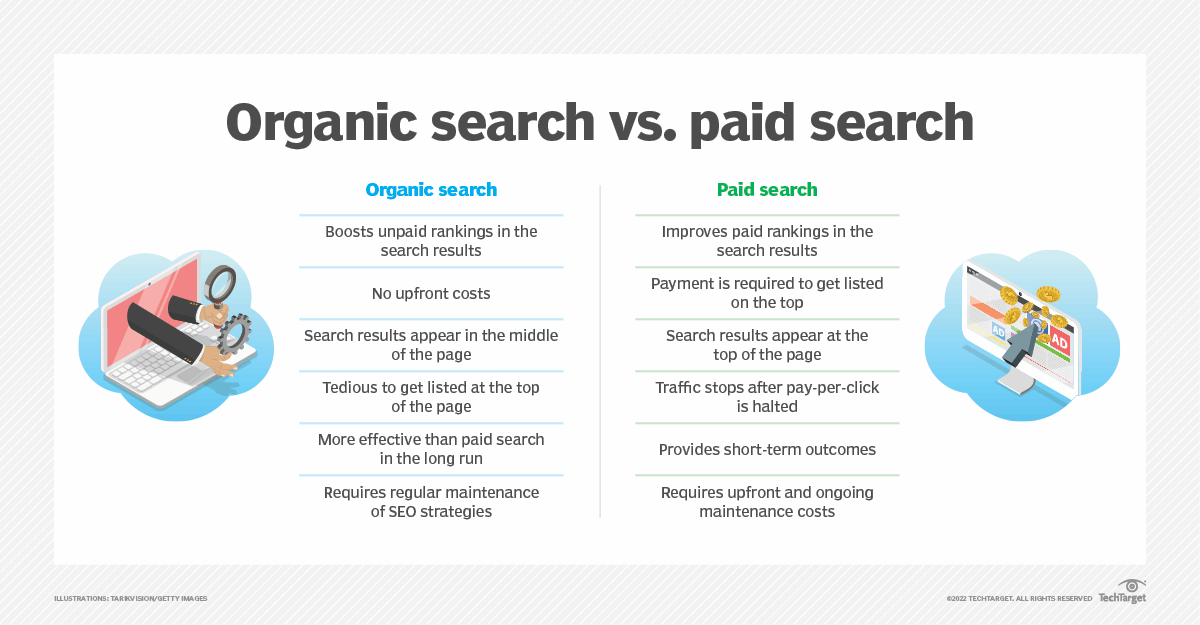
SEO algorithms determine website ranking by assessing relevance and quality. Align your content with algorithms and user satisfaction to create engaging, valuable posts.
How users interact with search engines and websites and their content is also essential. It includes factors such as:
- Search queries - the words and phrases users type or speak into search engines to find information, solutions, or answers.
- Click-through rate (CTR) - the percentage of users who click on a website or its content from the SERPs based on the attractiveness and relevance of its title, meta description, and URL.
- Dwell time is the amount of time users spend on a website or its content after clicking on it from the SERPs based on the quality and value of its content.
- Bounce rate - the percentage of users who leave a website or its content after viewing only one page without taking action, such as clicking on a link, filling out a form, or purchasing.
|
Write Content that Ranks Get our best practices to write blogs that attract and engage readers. Need more SEO insights? Dive into our full guide. |
2. Preliminary Steps Before Writing
Before you start writing blog posts for SEO, you need to take some preliminary steps to help you define and plan your SEO-friendly post.
The first step to writing an SEO-friendly blog post is to set clear and specific objectives for your blog post. Your goals should answer the following questions:
- What is the purpose of your blog post? The main goal or reason why you are writing your blog post can be to educate, inform, entertain, persuade, or inspire your audience.
- What is the outcome of your blog post? Your outcome is the desired result or action you want your audience to achieve or take after reading your blog post. It can be to learn something new, solve a problem, decide, or take a specific step.
- What is the value of your blog post? Determine the benefit or advantage that your audience will gain from reading your blog post. This can be saving time, money, or effort, improving their skills or knowledge, avoiding mistakes or risks, or achieving their goals or dreams.
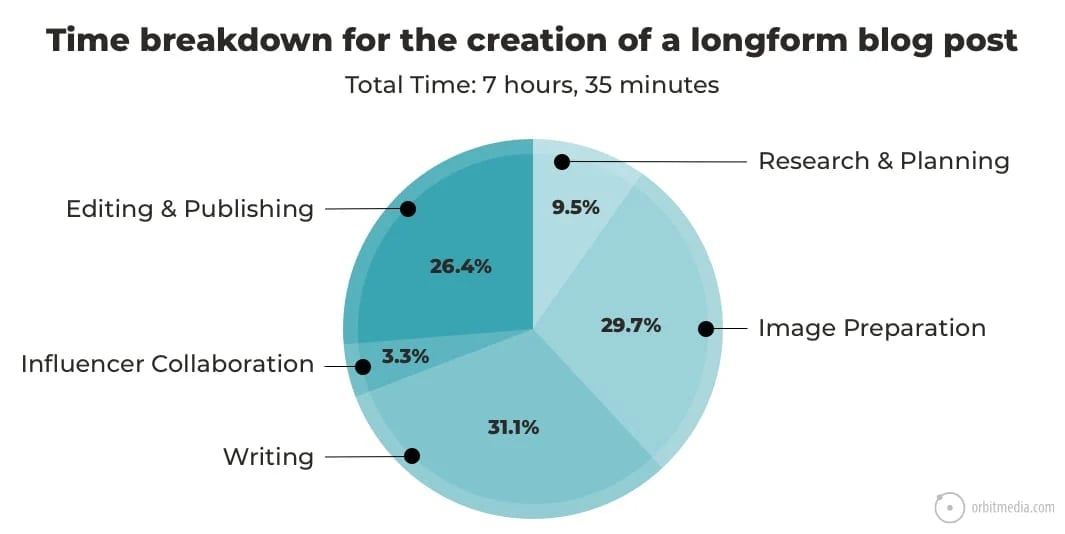
Setting clear objectives for your blog post makes you create relevant and aligned content that serves your purpose, outcome, and value, avoiding unnecessary information that may confuse or distract your audience.
3. Keyword Research: The Foundation of SEO
Understanding how to write blog posts for SEO involves strategic keyword research and optimization. It’s based on finding and analyzing the words and phrases your target audience uses to search for information, solutions, or answers related to your topic or niche.
Keyword research is the foundation of SEO, as it helps you understand your audience, optimize your content, and measure it.
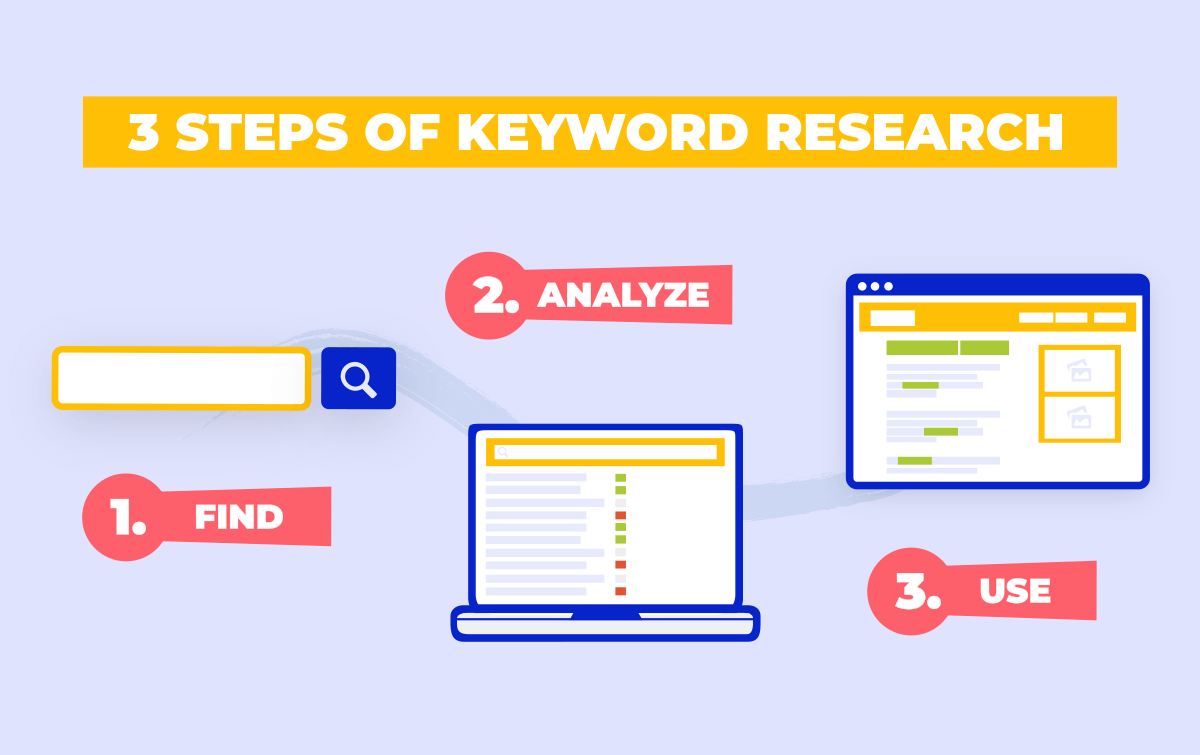
Mastering Keyword Research Tools and Techniques
To do keyword research, you must use various tools and techniques to help you find and analyze keywords for your blog post. Some standard tools and techniques you can use are:
- Keyword research tools help generate, filter and evaluate keywords based on criteria like search volume, difficulty, competition, or relevance. Popular ones include Google Keyword Planner, Moz Keyword Explorer, SEMrush Keyword Magic Tool, and Ahrefs Keywords Explorer.
- Competitor analysis involves researching and analyzing websites and content of rivals who rank for keywords or topics similar to yours. This technique helps you learn from their strategies and best practices while identifying gaps and opportunities to exploit.
- Topic research is researching and analyzing the topics and subtopics related to your main topic or niche. It helps you find popular keywords, questions, and trends to create detailed content that covers your topic thoroughly.
Deciphering Keyword Intent for Targeted Content
Keyword intent is the user's goal behind a search query, reflecting what they want to achieve. It falls into four main types:
- Informational: Seeking knowledge on a topic or question. Example: "How to write SEO-friendly blog posts."
- Navigational: Looking for a specific website or resource. Example: "KeyScouts website."
- Transactional: Ready to buy a product or service. Example: "Buy iPhone 12"
- Commercial: Comparing options before making a purchase. Example: "Best laptop for blogging."
Aligning with your audience's keyword intent is critical for creating relevant content that meets their needs. It boosts CTR and dwell time while reducing bounce rate.
The Art of Choosing Keywords: Primary, Secondary, and Long-Tail
Choosing keywords for your blog post is both an art and a science. It would help if you balanced relevance, popularity, difficulty, variety, and diversity. The main types of keywords are:
- Primary keyword: This represents the main topic of your post, with high search volume and competition. For example, " how to write a blog post."
- Secondary keywords: Support the primary keyword with lower search volume and competition. Example: "SEO best practices."
- Long-tail keywords: Target specific segments with low search volume and competition. Example: "SEO tips for small businesses."
4. Structuring Your Blog Post for Success
After you have chosen the keywords for your blog post, you need to structure it for success. Structuring your blog post means organizing and formatting your content in a way that makes it easy for your audience and search engines to read, understand, and follow.
It would help if you created an outline or framework that defines the main sections and parts of your blog post and the order and sequence in which they appear. The blueprint of an SEO-friendly blog post usually consists of the following:
- Title. Your blog post's headline or name is the first thing your audience and search engines see. It should be catchy, concise, and clear, including your primary keyword and value proposition.
- Meta description. Craft an engaging meta description encapsulating your blog post's essence, serving as a persuasive snippet for your audience and search engines. Ensure it includes your primary keyword and a compelling call to action to entice clicks.
- Introduction. This is the initial section of your blog post, appearing third in line for your audience and search engines. It must be engaging and incorporate your primary keyword, hook, background, and thesis statement.
- Body. Your body is the essence of your blog post, containing secondary keywords, main points, evidence, and analysis.
- Conclusion. It's the closing or the end of your blog post, so make it memorable, impactful, and conclusive. Include your primary keyword, recap, implications, and call to action.

Organizing Content with Headings for Maximum Readability
Headings are titles or labels for sections and subsections in your blog post, organizing content into manageable chunks and signaling its structure and hierarchy. They are formatted differently to indicate importance and relevance, with typical levels including:
- H1 is the top-level heading, typically reserved for your blog post's title. Make it unique, descriptive, and catchy, incorporating your primary keyword and value proposition.
- H2 is the second-level heading, often applied to significant sections like the introduction, body, and conclusion. Ensure it's informative, specific, and clear, including secondary keywords and main points.
- H3, the third-level heading, typically applies to sub-sections like sub-points, examples, or tips. Keep it relevant, descriptive, and concise, incorporating long-tail keywords and sub-points.
Formatting your SEO post with clear headings and bullet points improves readability and user experience. They organize your content, creating a clear hierarchy and ensuring consistency. Tracking metrics through headings also helps gauge performance, highlighting key points and calls to action.
|
Make Every Post Count Gain practical tips to create blogs that rank and engage. Learn to blend SEO with readability for the best results |
Enhancing Engagement: The Role of Lists, Bullet Points, and Paragraphs
Lists, bullet points, and paragraphs are the elements or components that help you present and format your content to make it easy to read, understand, and follow for your audience and search engines.
Lists, bullet points, and paragraphs are usually used to:
- Highlight the key points or the main ideas of your content, such as the benefits, the features, the steps, or the tips. You can also use them to emphasize the value and the outcome of your content, such as the results, the solutions, or the actions.
- Structure the supporting details of your content to provide context, examples, evidence, and analysis, enhancing comprehension and engagement. Use them to illuminate the problem, question, or idea at hand, fostering a deeper understanding for your audience.
- Create a clear and logical flow and sequence for your content, such as the introduction, the body, and the conclusion. You can also use them to create a smooth and coherent transition and connection between your content, such as the cause and effect, the comparison and contrast, or the problem and solution.
5. Crafting Compelling Titles and Meta Descriptions
After you have structured your blog post, you need to craft the elements or components that appear on the SERPs, which helps your audience and search engines decide whether to click on your website and your blog post.
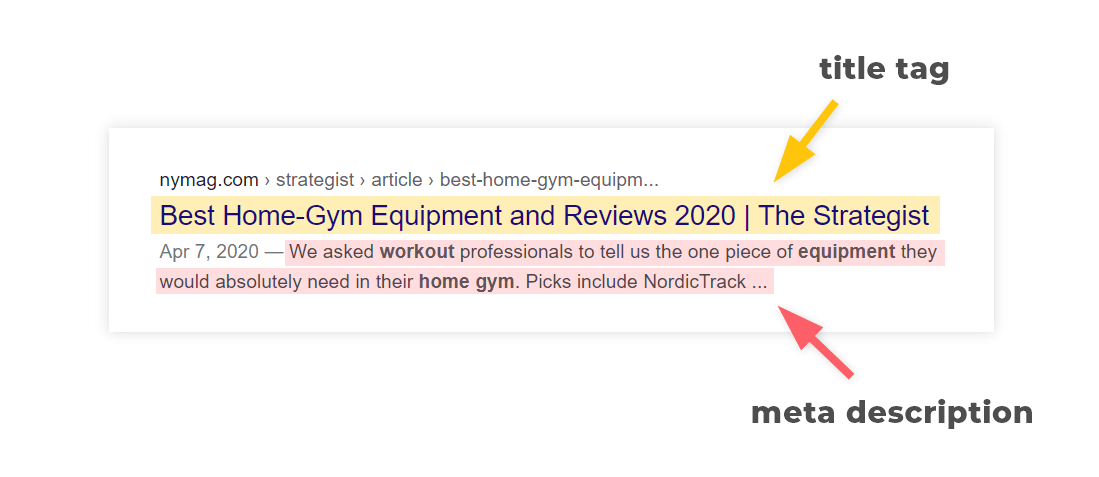
The most common guidelines for writing titles and meta descriptions are:
- Title should be between 50 and 60 characters extended and include your primary keyword and your value proposition. Make it catchy, concise, and straightforward to capture the attention and interest of your audience.
- Meta description should be between 150 and 160 characters long and include your primary keyword and call to action. It should also be informative, persuasive, and enticing to encourage your audience to click on your website and blog post.
Crafting compelling titles and meta descriptions increases your CTR by capturing the audience's attention and reflecting their intent—modifiers like "how to" or "best" enhance specificity and appeal.
Ensuring relevance through titles and meta descriptions aligned with your topic and audience expectations boosts popularity, mainly when reflecting current trends and interests while maintaining low competition.
6. Optimizing Content for Search Engines and Readers
After creating your titles and meta descriptions, optimize your content to enhance its quality, relevance, and engagement for readers and search engines. Use techniques and strategies to make your content more discoverable, valuable, and appealing to your audience.
Integrating Keywords Seamlessly into Your Narrative
Keywords are the terms your target audience uses to search for information, and they're crucial for search engine ranking. Integrating keywords seamlessly into your content means using them naturally and strategically without compromising quality or engagement.
By integrating keywords seamlessly into your narrative, you can:
- Increase your relevance. Use keywords that match your topic, your purpose, your outcome, and your value, as well as your audience’s intent and expectations. You can also use keywords that cover the topic comprehensively and in-depth without being too broad or too narrow.
- Increase your popularity. Use high-demand keywords reflecting audience trends and interests. Utilize low-competition keywords to gain a competitive advantage.
- Increase your engagement. Use engaging keywords to captivate your audience and prompt interaction. Employ persuasive keywords to drive action, like subscribing, downloading, or purchasing.
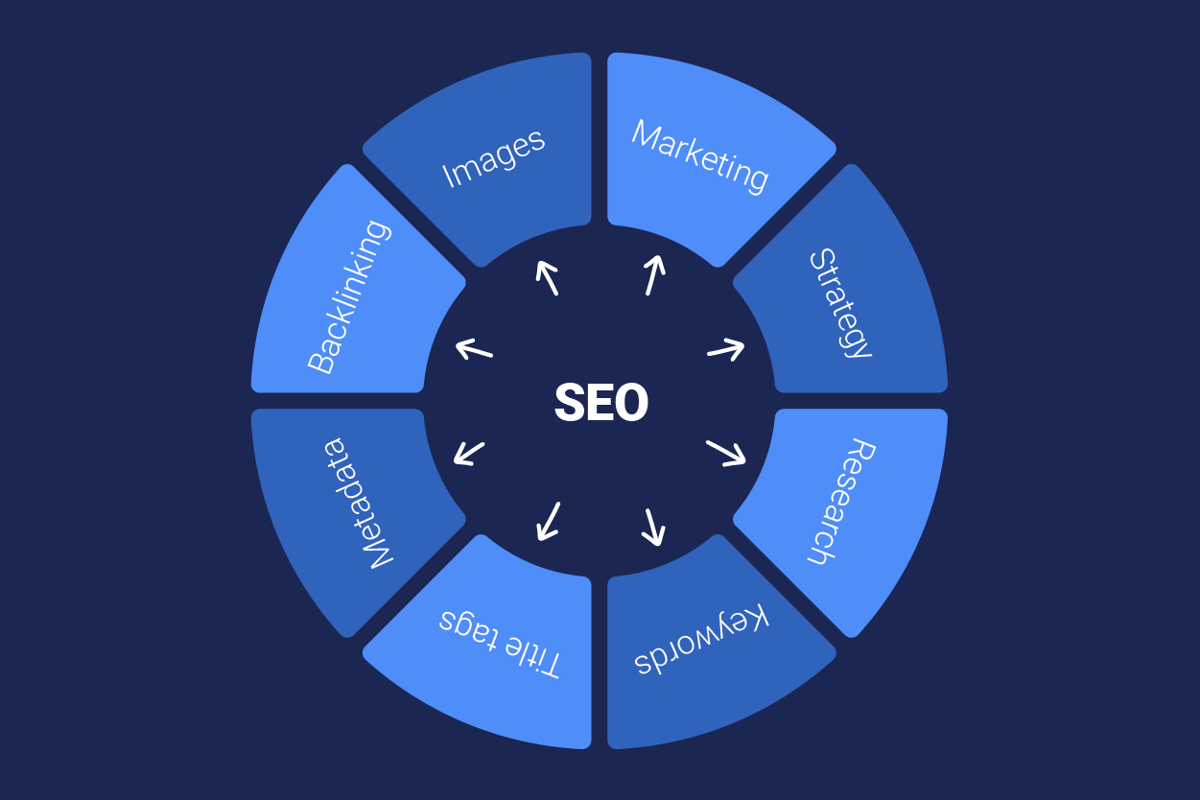
Balancing Information with Engagement: Content That Delivers
Exceed expectations by delivering content that surpasses initial intent. Showcase expertise to build authority. Cultivate loyalty with engaging content that fosters connection.
Some of the ways that you can increase your loyalty by providing content that builds a relationship, rapport, and connection with your audience are:
- Use a conversational and personal tone that makes your audience feel like you are talking to them directly and that you understand and care about them.
- Tell stories and share experiences illustrating your points, values, and personality.
- Ask questions and invite feedback that encourages your audience to interact and engage with you and to share their opinions, thoughts, or feelings.
- Provide solutions and answers that help your audience solve their problems, answer their questions, or achieve their goals.
- Provide resources and recommendations that help your audience learn about, do, or become more involved with your topic or niche.
- Provide incentives and rewards that motivate your audience to take action, such as subscribing to your newsletter, downloading your lead magnet, or buying your product or service.
7. Enhancing Your Post with Visuals
Visuals appeal to the eye and are powerful tools to increase engagement and retention on your blog post. Images, videos, and infographics can help you:
- Illustrate your points and examples with visual aids
- Break up long blocks of text and make your post easier to scan
- Provide additional value and information to your readers
- Attract more attention and shares on social media

However, to make the most of your visuals, you also need to optimize them for SEO. This means:
- Using descriptive and relevant alt texts for your images and videos, which help search engines and users with disabilities understand what they are about
- Reducing the file size and format of your visuals which can improve your page loading speed and user experience
- Choosing the right keywords and captions for your visuals which can boost your ranking and click-through rate
8. Internal and External Linking Strategies
Linking is adding hyperlinks to your content that direct your readers to other pages or sites. This practice can enhance your SEO, user experience, and authority while boosting traffic, engagement, and conversions.
|
Write Content that Ranks Get our best practices to write blogs that attract and engage readers. Need more SEO insights? Dive into our full guide. |
Building Your Site’s SEO with Strategic Internal Linking
Internal linking is the process of linking to other pages or posts on your site. It boosts SEO by creating a clear structure, improving crawlability, distributing authority, and enhancing user experience by offering additional resources and navigation options.
Use relevant anchor texts that naturally fit within your content to optimize internal linking. Anchor texts are the words or phrases you use to link to another page or site. For instance, in a blog post about writing SEO-friendly content, link to related posts with anchor texts like "How to Choose Keywords" or "Measuring Blog Post Performance."
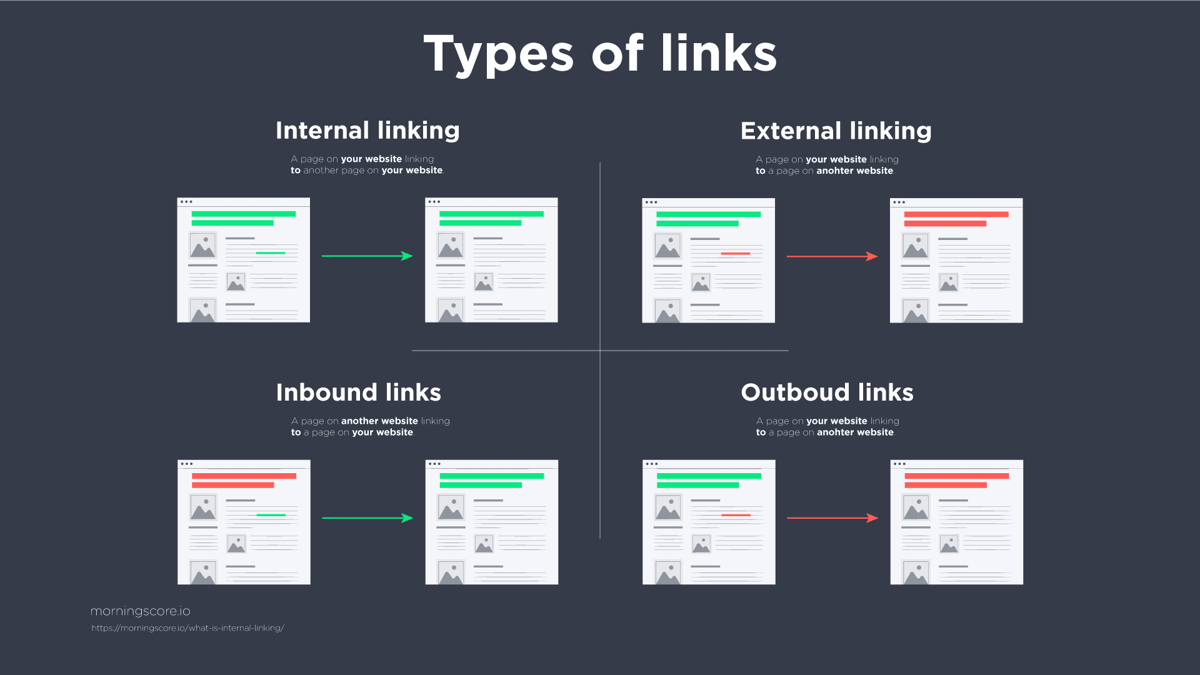
External Links: Enhancing Authority and Relevance
External linking directs readers to pages or sites outside your own. It enhances authority and relevance by citing sources and providing valuable information. To optimize this, link to reputable and relevant sites related to your topic or industry.
Choose highly credible and trustworthy sites with helpful information and a positive user experience. For example, in a blog post about SEO-friendly content, link to reputable sources like Moz or HubSpot for relevant statistics or best practices.
Linking Best Practices: Anchor Texts and Link Quality
Follow best practices for SEO, user experience, and authority when using links. Here are key practices to remember:
- Use relevant, descriptive anchor texts that fit naturally in your content. Avoid generic phrases like "click here" or "read more," as they offer little value to readers and search engines.
- Use a variety of anchor text types to avoid appearing spammy. Options include exact match, partial match, branded, naked, or generic. The exact match aligns with the linked page's primary keyword (e.g., "How To Write SEO-Friendly Blog Posts"), while the partial match includes the keyword with additional terms (e.g., "Tips for SEO Blog Writing"). Branded text comprises your brand name, while naked text uses the URL. Generic phrases like "here" or "source" can also be used.
- Maintain a balanced link ratio. Avoid excessive or insufficient links in your blog post, as both can impact SEO and user experience. Too many links can clutter content and reduce authority, while too few can appear isolated and limit engagement. Aim for 2-3 links per 1000 words, balancing internal and external links based on your objectives.
- Avoid low-quality links. Refrain from linking to sites with low domain authority or credibility, irrelevant content, or a negative reputation, as these can harm your SEO and credibility. Ensure sites are accurate, updated, and trustworthy, and avoid those with malware or spam. Tools like MozBar or Ahrefs can help assess site quality.
9. Technical SEO for Blog Posts
Technical SEO is the process of optimizing the technical aspects of your site and content for search engines. It improves your site’s speed, performance, security, and usability, which are all important ranking factors for SEO, and helps you avoid or fix any errors, issues, or penalties that can affect your SEO and user experience.
Mobile Optimization: Catering to the On-the-Go User
Mobile optimization ensures your site and content are user-friendly on mobile devices, which is crucial for SEO as more users access the web via smartphones and tablets. Search engines like Google prioritize mobile-first indexing, using mobile versions for ranking.
To optimize, use responsive design to adjust content to various screen sizes and ensure easy navigation and legible fonts for mobile users. For instance, prioritize mobile-friendly layout and design when writing an SEO post.
Speed Optimization: Enhancing User Experience and SEO
Speed optimization ensures your site loads quickly and smoothly on user devices, which is critical for SEO and user experience, particularly on mobile. To optimize, reduce the size and complexity of site elements like images and scripts and improve delivery through techniques like compression and caching.
Tools like Google PageSpeed Insights can help measure and enhance site speed. For instance, ensure optimized elements for fast loading when writing an SEO-friendly blog post.
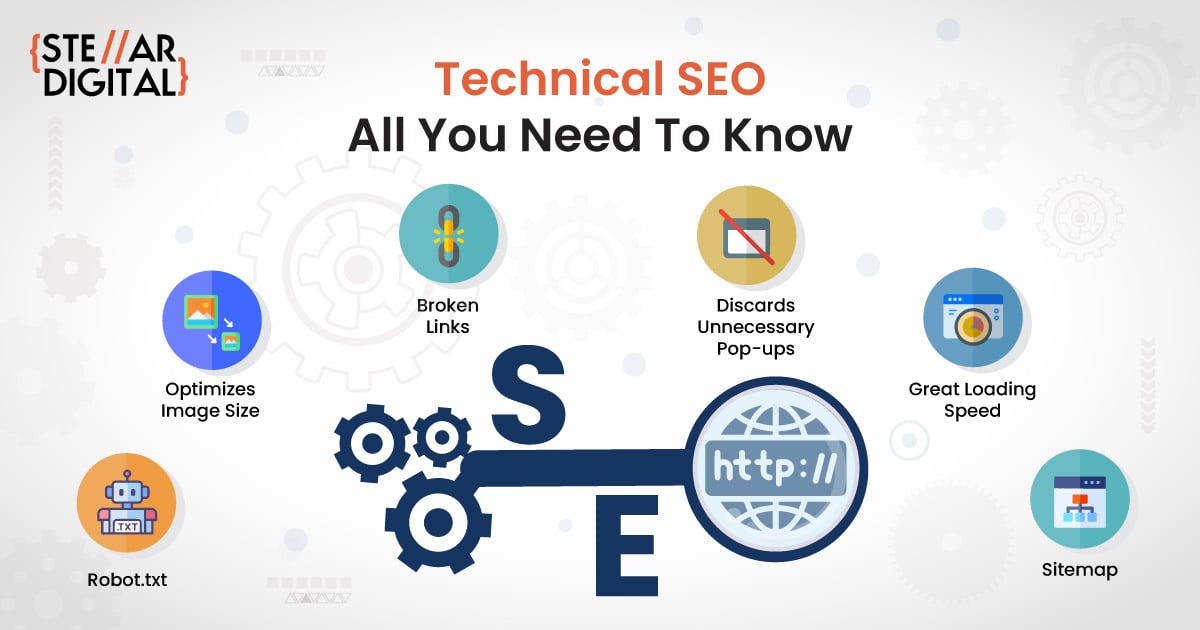
URL Optimization: Clean, Concise, and SEO-Friendly Permalinks
URL optimization ensures your site and content URLs are clean, concise, and SEO-friendly, which is vital for search engines and user experience. Using permalinks—permanent, static, and human-readable URLs—describing your content with keywords, hyphens, and lowercase letters aids search engine understanding and user navigation.
Avoiding parameters, underscores, or uppercase letters prevents confusion. For instance, when crafting a, SEO post, ensure your permalink is clear and concise, like "https://mywebite/blog/how-to-write-seo-friendly-blog-posts."
10. Post-Publishing SEO Strategies
Post-publishing SEO strategies are essential for maintaining and improving your blog post's performance and ranking on search engines. Here are some strategies to implement after publishing:
Beyond Publishing: Promoting Your Blog Post for Maximum Reach
Promoting your blog post is crucial for increasing its visibility and attracting your target audience. Here's how to do it effectively:
- Utilize various channels like email, social media, forums, and influencers to reach your audience.
- Engage your audience with compelling headlines, images, videos, and CTAs.
- Measure and optimize your promotion efforts using analytics tools like Google Analytics, Facebook Insights, or Twitter Analytics.
- Analyze metrics such as impressions, clicks, views, shares, likes, comments, conversions, and revenue to understand your audience and improve your strategy.
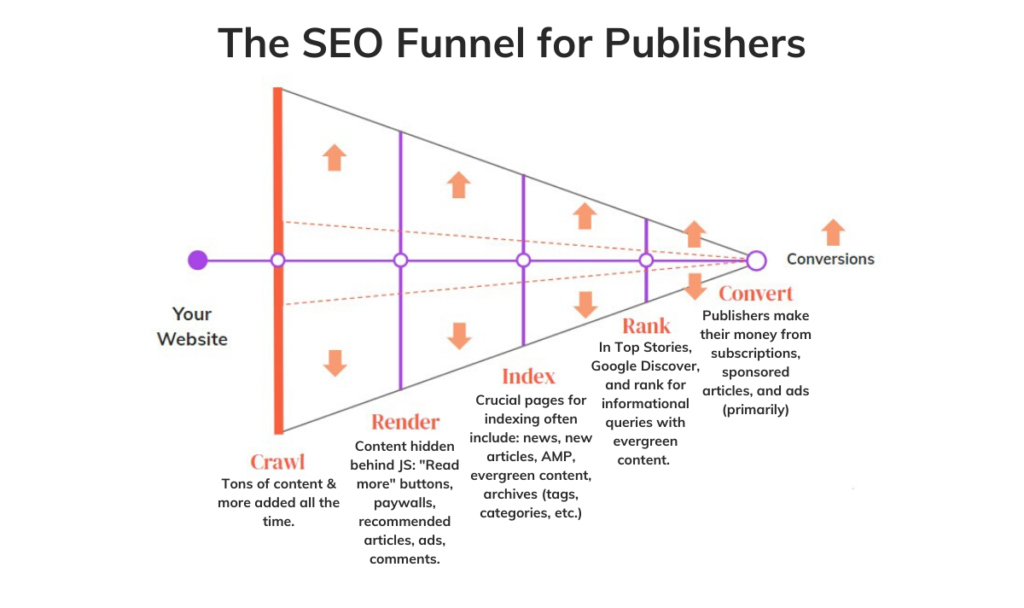
11. Advanced SEO Tips and Tricks
Once you've mastered the basics of writing an SEO-friendly blog post, it's time to explore advanced techniques to enhance your content's visibility and performance. Here are some advanced SEO tips and tricks to take your blog posts to the next level:
- Leveraging Schema Markup for Rich Snippets: Implement schema markup to provide search engines with additional context about your content, which can lead to the display of rich snippets in search results. Rich snippets can include information like star ratings, pricing, or event dates, making your content more prominent and enticing to users.
- Building Topic Clusters: A Comprehensive Approach to SEO: Adopt a topic cluster strategy to organize your content around pillar pages and related subtopics. This approach helps search engines understand the depth and breadth of your content on a particular subject, improving your chances of ranking for related keywords and driving more organic traffic to your site.
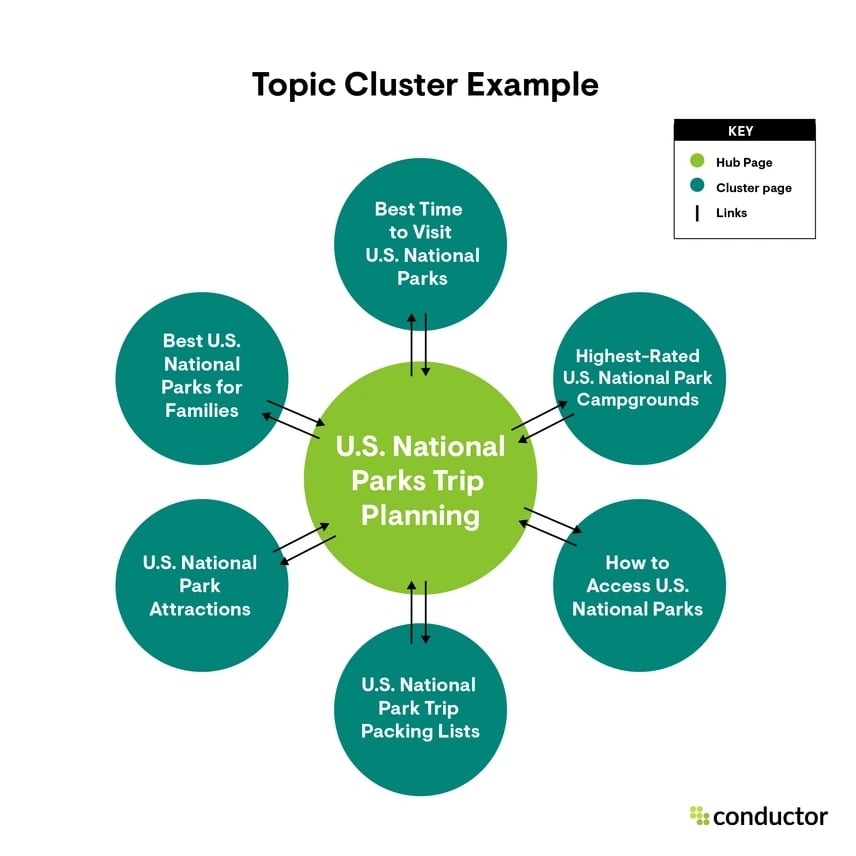
By incorporating these advanced SEO techniques into your blogging strategy, you can further optimize your content for search engines and attract more visitors to your website.
The Ever-Evolving Landscape of SEO: Staying Ahead
Effective SEO blog posting requires strategic keyword placement and high-quality content. By following the 11 easy steps outlined in this blog post, you can create and publish blog posts that rank high on search engines, attract and engage your target audience, and achieve your goals and objectives.
Here is a quick recap of the 11 easy steps that you need to follow to write SEO-friendly blog posts:
- Choosing the right topic and keywords
- Writing captivating headlines and meta descriptions
- Crafting engaging introductions and conclusions
- Structuring your content with subheadings and lists
- Writing clear, concise, and compelling content
- Optimizing content for search engines and readers
- Enhancing your post with visuals
- Internal and external linking strategies
- Technical SEO for blog posts
- Post-publishing SEO strategies
- Advanced SEO tips and tricks
Keep track of the latest trends and best practices to stay ahead in SEO. Follow trustworthy sources like blogs or podcasts for valuable insights. Experiment with different strategies and tools to see what works best for your site and content.
|
Make Every Post Count Gain practical tips to create blogs that rank and engage. Learn to blend SEO with readability for the best results. |





